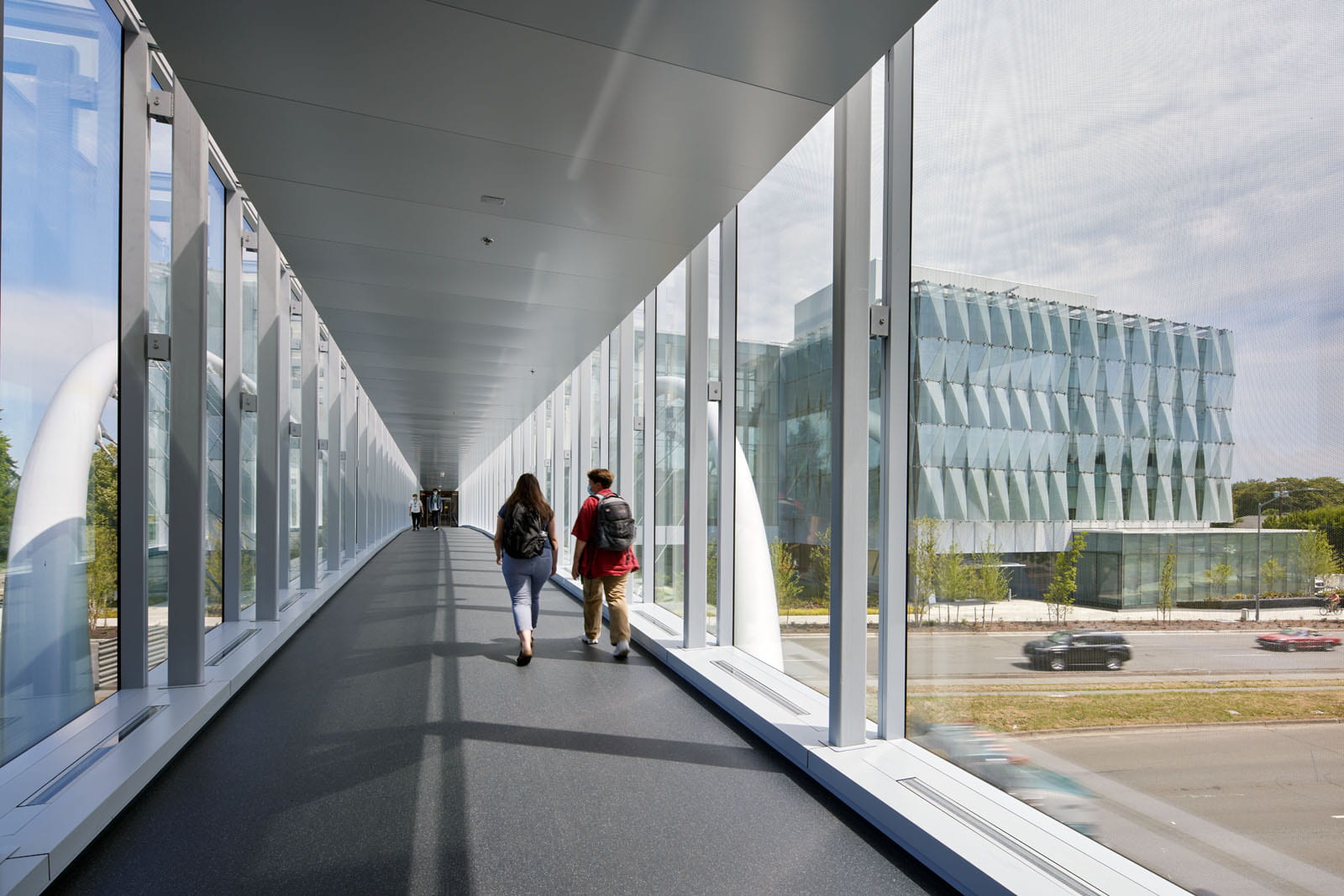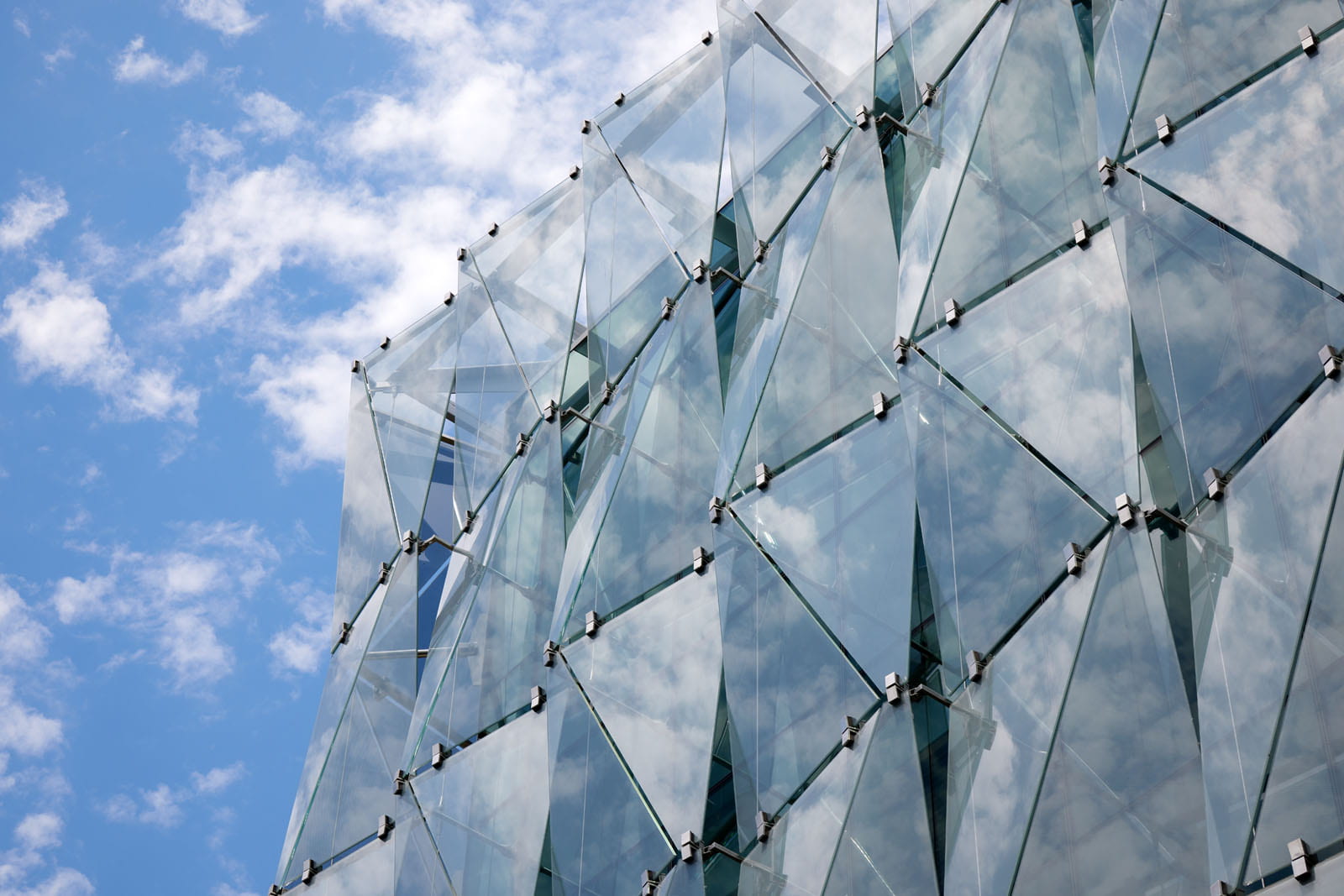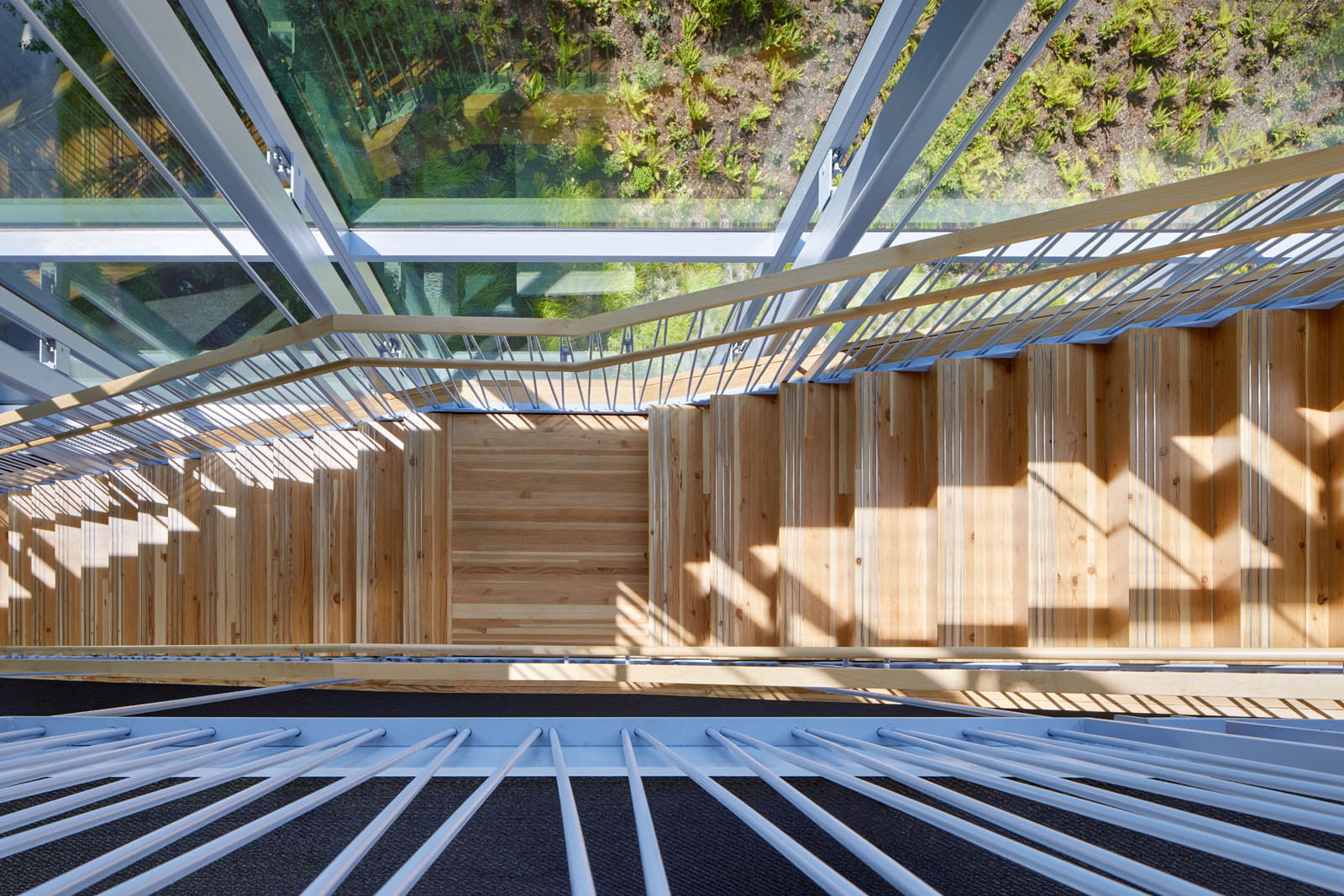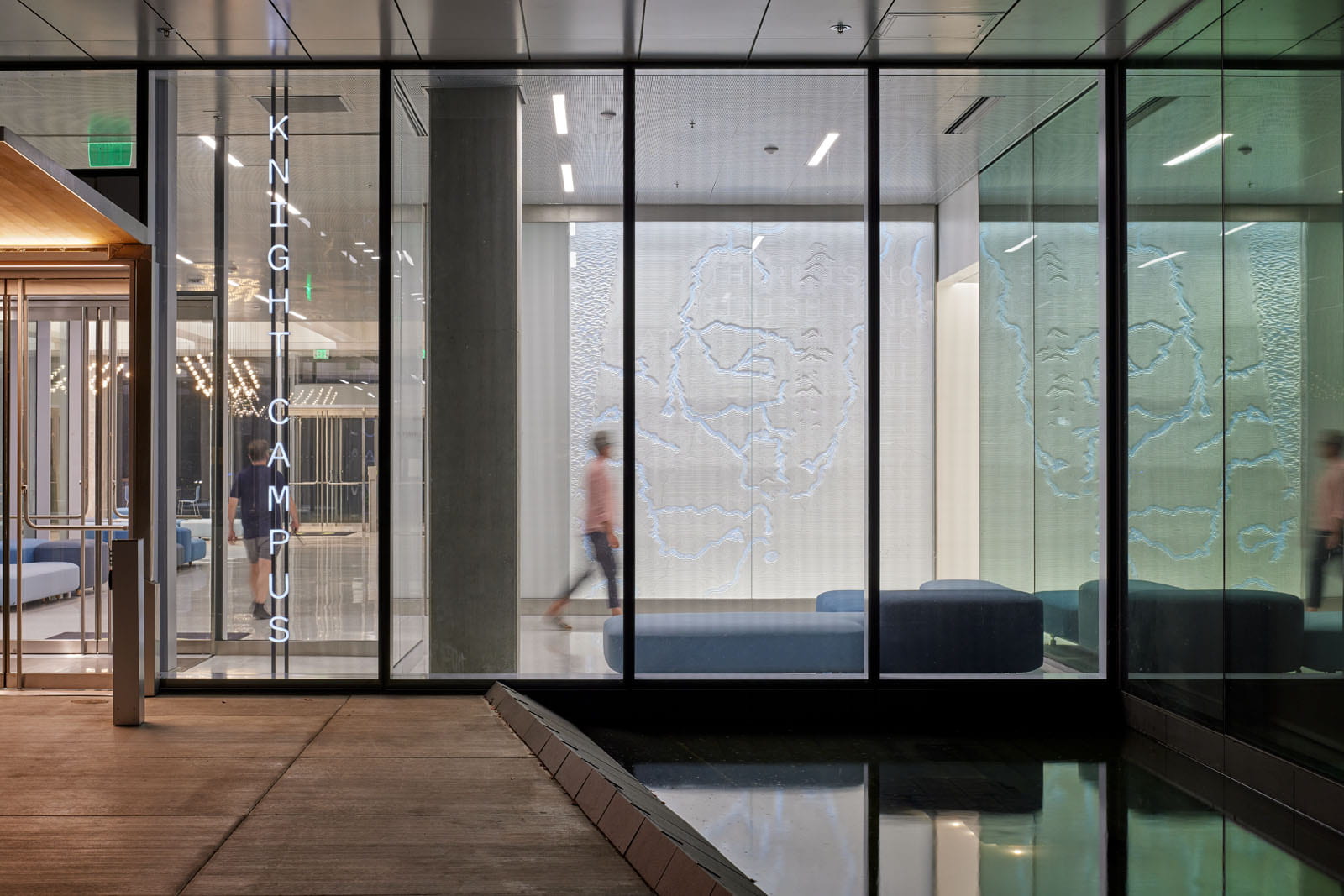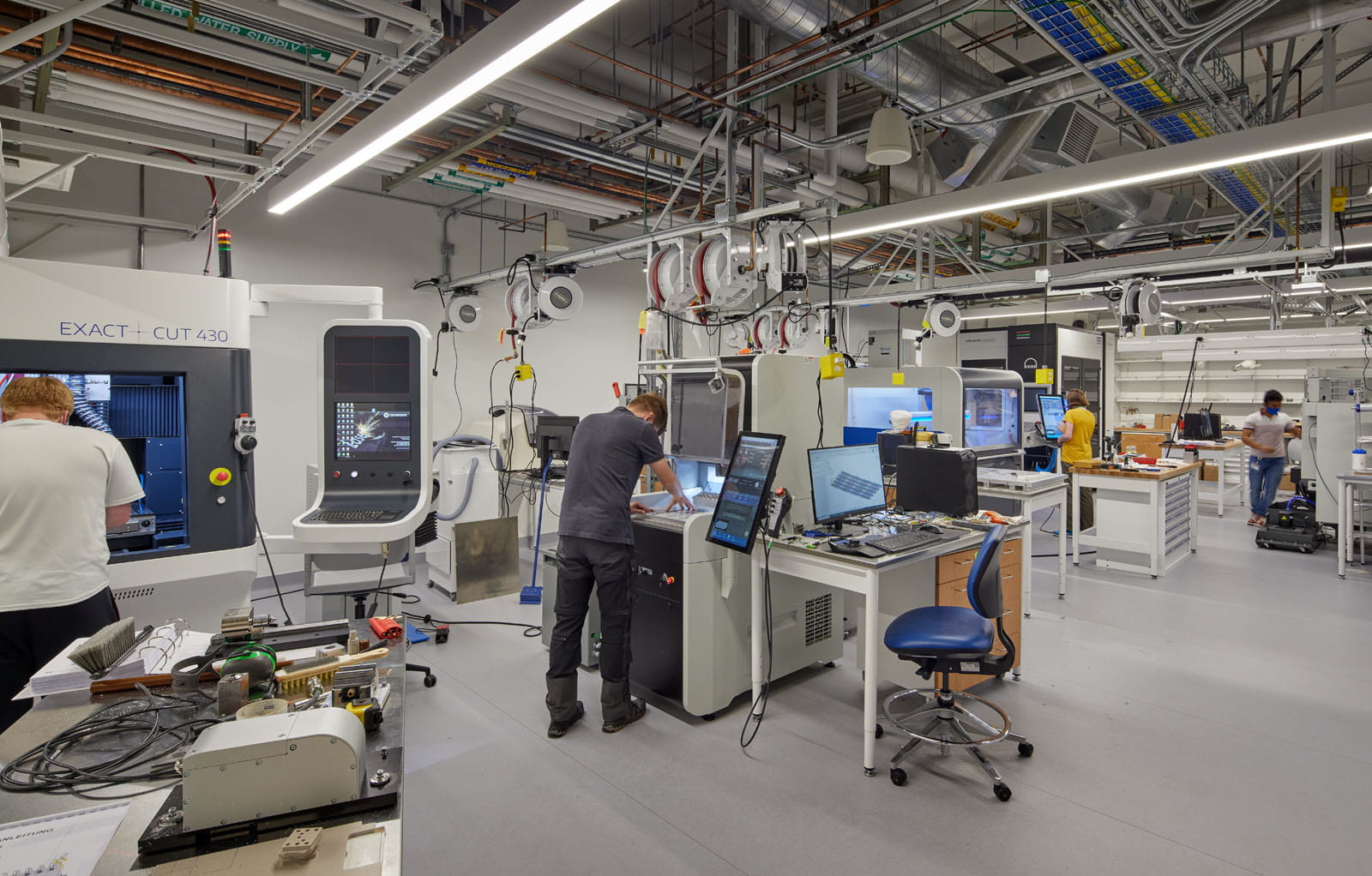CFAR Project Incubator Fellows 2023-2024
Image Caption: University of Oregon Knight Campus for Accelerating Scientific Impact. Photo credit: Bruce Damonte, Knight Campus Media Assets
ABOUT
The CFAR Project Incubator (CPI) is a partnership between the University of Oregon Department of Art’s Center for Art Research (CFAR) and Phil and Penny Knight Campus for Accelerating Scientific Impact, which affords artists working in any medium the opportunity to explore and conceptualize new work as a part of a vibrant, interdisciplinary research community that is supported by cutting-edge facilities and technical staff. This program is born out of CFAR and Knight Campus’s goals to create nimble systems that catalyze innovation and discovery by responding to the needs of individual’s specific research agendas. CPI’s emphasis is not necessarily on the production of a body of work, but instead on speculative, practice-based inquiry focused on ideation, experimentation, prototyping, testing, fabricating, and theoretical research to initiate and incubate new work. This program is generously funded by The Ford Family Foundation.
Image captions:
1-2: Foundation for Naomi, Bronze, Studiomade Foundation, and Jasmine
3-4: A Lockpicking Manipulative, Polycarbonate, Brass, Steel, Bronze, and Rubber
5-6: Blush for Bashie, Copper and Studiomade Blush
6-7: A Scribe Jig, Bronze, Acrylic, Steel, and Rubber
Brian Gillis
Residency Dates: 10/9/23 – 11/3/23
Project: With a recent acknowledgment that “Service” is a foundational principle in my practice, I have begun to see all the ways that this applies to interventions in public spaces, partnerships with individuals and communities, and the production of objects for use. I’m thinking more and more about objects that provide a resource for users and have come to the concept of “Service Objects” as a possible way to exercise this potential.
- To incubate of a series of “Service Objects”, or utilitarian, sculptural objects that support the acquisition of skills or knowledge related to social equity, access, and agency. Some of these objects will enable rote skill-building through educational manipulatives that draw on my own history, like lock-picking trainers or DIY tattoo guns for juveniles. Other objects will be made to publicly support institutional missions, like a mobile story archive, kiosk for instructional videos, or human-generated power supply.
- To model and test possible forms, and to produce finished objects for immediate use.
Image captions:
1: Tray #1, milled acrylic using drawing of my mother’s silhouette, 23″ x 24″ x 1 1/4″, 2023
2: Underbelly Installation, gelatin and chain, Petrichor Gallery, 2024
3: Underbelly Installation, detail, gelatin and chain, Petrichor Gallery, 2024
4: Tray #2: Deviled Egg Tray, milled acrylic, 11″ x 11″ x 1 1/4″, 2023
5: Tray #2 with gelatin cast (work in progress)
Noelle Herceg
Residency Dates: 11/6/23 – 12/4/23
Project: I explore physical, spatial and temporal materialities through a lens of printmaking, creating bio-plastic forms that undergo multiple stages of transmutation. My work is motivated by the “print” as a trace, leftover, or way of documentation–that may or may not last. My ongoing series of work investigates a connection between the materiality of gelatin–collagen based protein obtained from decaying animal skin, bones, and tendons–and my own skin.
- To further develop a series of sculptural prints while investigating the material kinship I have with gelatin.
- To create new trays for high-density gelatin pours and to explore specificity of the edges of the cast sheet.
- To utilize the printed image and explore the interaction between printed imagery and the transient surface of gelatin plastic.
- To activate discussions regarding material kinship and ephemerality.
Image captions:
1: Dendrotope 1, ink and digital drawing, dimensions variable, 2024. During my residency with CFAR, I combined drawing with manipulated point cloud data to create a visualization of a 4-dimensional tree. Starting with a point cloud 3D model of a douglas fir, I introduced a 4th axis of data based on local climate trends from the last 50 years. Adding this data to the point cloud produced a series of images that represented a tree morphing and twisting into an unrecognizable form. I integrated these point systems into ink drawings that I created to describe the lore of a 4-dimensional tree-like organism called a “Dendrotope.”
Julia Oldham
Residency Dates: 1/8/24 – 2/1/24
Project: The Hyperforest is an ongoing project that imagines trees that have evolved to become higher dimensional beings (Dendrotopes) in order to escape the dangers of clear cutting, climate change and catastrophic wildfire.
- To develop a mathematical description or data set describing a higher dimensional tree, or Dendrotope, and to then visualize that data using interactive computing. To accomplish this, I will start with a data set describing a 3D model of a tree, and then add axes with additional data.
- To develop methods of adding axes/dimensions to that data set to create a Dendrotope.
- To create a series of visual images, utilizing different data visualization techniques ranging from graphs to digital 3D models in which I translate higher dimensional data back into a roughly 3D form.
- To have the data set and visualizations serve as assets for animation, print projects and writing about the Hyperforest.
Image captions:
1: Milled amulet
2-3: 3D amulet renderings
hiba ali
Residency Dates: 2/5/24 – 3/4/24
Project: Reflecting on the role of women of color’s labor and technology allows me to consider the labor and journeys of my ancestors, particularly the femme and queer people from previous generations. In my decolonial, antiracist and feminist arts practice, it is very important to center the margins, people and places, and histories that are forgotten, hidden or cast-aside, to visualize underrepresented histories and issues of caste, class, and antiblackness.
Amulet jewelry are ritual objects that have been used for generations in the cultures of the Swahili-Indian ocean region. Making amulet jewelry is part of my continued research on practices of Sufi devotion and protective symbols within the Swahili-Indian Ocean region. Good omens and well wishes, as ritual objects, offer a circle of protection that connect us to our memories and hopes for the future. The ornate design of the milled amulet calls forth meditative gestural drawings that can soothe the mind and hold us.
- To develop at least fifteen amulet jewelry items such as necklaces and rings anchored in practices of Sufi devotion and protective symbols within the Swahili-Indian Ocean region.
- Each necklace will have a cavity for scent paste of myrrh, frankincense, jasmine, and rose and drawings of sacred geometry to be placed.
Image captions:
1-2: Intervening Membrane, 2023, 6” W x 6” H x 5” D, Resin Sculpture Created with the support of CFAR at the University of Oregon
3-4: Intertwined, 2023, 6” W x 7” H x 6” D, Resin Sculpture. Created with the support of CFAR at the University of Oregon
5-7: Laser embossing 18” W x 24” H Plexiglas Pattern based on this hand digital Jacquard weaving, superimposed on weaving.
Joan Truckenbrod
Residency Dates: on-going for 2023-24
Project: Interstices between the physical and the digital, the material and the virtual is integral to my artistic research. Artwork embodying both material and digital attributes, continues to inform my studio practice. My project at the Knight Center expands my investigation into creating artwork in the ambiguous liminal space between these two realms, or dimensions of experience.
The intention of this project is to oppose the stigma injected into homelessness, the identity of differentness superimposed onto the homeless. Another dimension of this project is a series of digital Jacquard weavings I created that juxtaposed images of the fences constructed around homeless camps, with organic, fluid forms. These weaving were included in the “Digital Weave” exhibit at the Schnitzer Art Museum at PSU. Also addressing this issue, I created a series of limited edition prints with Master Printer Mark Mahaffey.
In this project I continue to explore the construct of housing – both the housed and un-housed. Using 3D scanning and printing, I was able to digitally injected organic forms from the natural world into constructed house forms. The objective is to “undo” the conventions of shelter as “house”.
I created house forms out of velum, which has a vulnerability, and a house form using a textile I had woven. This project provides the opportunity to integrate hand digital Jacquard weaving with 3D scanning and printing. I also incorporated dried leaves and dried wound seaweed. These were 3D scanned, becoming 3D forms in virtual space, with digital malleability. Working on the computer with Eowyn, I intersected the houses with these organic forms. The textile house maintained the texture of the fiber while the velum house was smooth. Both house forms became “bound” by seaweed. The leaf forms further pushed the houses into the organic realm. The compositions created on the computer were then 3D printed first in grey nylon powder and next in white resin. This beginning series of sculptures advocates for new perspectives for creating shelter to meet individual preferences and needs.
